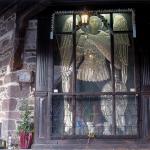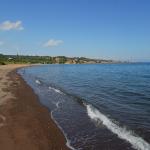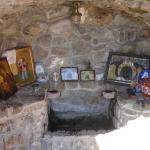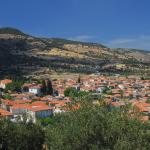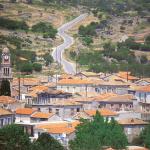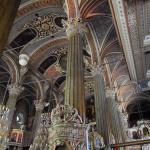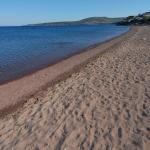Mantamados - Kapi - Pelopi - Klio

Mantamados is located on the northeastern side of the island. It is a large town with traditional architecture, picturesque little streets and cobbled kalderimia, as well as excellent produce, meat and other products including cheeses, honey, olive oil and pottery. Be sure to try the yogurt, the local ladotyri, fresh cheeses and meats. You’ll also find beautiful ceramics at very good prices here, and you can visit the workshops to watch the potters at their wheels. Today only nine workshops are in operation of the 60 that were in existence in the 1950s.
Be sure to take a walk through the main square of the town. The Polykentro Cultural Center, housed in a renovated former olive oil press, is characteristic of the industrial buildings built on the island in the early 20th century. An exhibition of pottery from all over Lesvos is held there every August.
Yeni Limani (Skala Kapi)
This little fishing village was a supply center for the north side of the island in the last century. The farmhouses with their vegetable gardens and period buildings testify to the fact that this was once a flourishing place. If you continue driving north you’ll end up at the small beach, Feroyia. The view from above is stunning and the route, though difficult, is truly magical.
Agios Stefanos
Three three ceramics workshops in Agios Stefanos, known as the Keramidaria, still adhere to the old method of production. This settlement is today one of the few traditional pottery centers in all of Greece. Its workshops manufacture many types of pottery, from gigantic oil containers (pithari) to the smallest water pitchers (koumari).
Palios
This small, trendy fishing village is one of the most picturesque on the island. It’s popular with Mytilenian artists and intellectuals, who in recent years have purchased and renovated many of its old houses, giving the place a charming, lively atmosphere.
Beaches for Swimming
There are good places to swim in Pedi, Palio, Aspropotamos, the harbor of Kapi, and Tsonia (the seaport of Kleio). In the summer you’ll find tavernas there with fresh fish and fine local meat and cheeses. Some of these stay open in the winter too and serve the island’s most delectable dishes in a deserted, unbelievably beautiful landscape.
The Villages of Kapi, Pelopi, Kleio
Pelopi, or Yelia, and Kapi are to this day purely farming and livestock villages. To find out where to get the best trahanas, honey and cheese, go to the local café. You’ll find the locals particularly friendly and ready to tell you all you need to know. The honey here, obtainable only from small local producers, has a distinctive flavor and aroma. Kleio has many large distinguished homes. Head back to the square for ouzo and, if you’re there in the evening, sample some of the grilled meats. Don’t forget the festival of the bull that takes place every summer.
The Monastery of Taxiarches – A Unique Icon!
Mantamados is famous for this monastery. Built in the 17th century, it contains the icon of the Archangel Michael, which is said to be made from mud and the blood of the monks who were slaughtered there in a pirate invasion. A bull is slaughtered on the eve of its festival, which takes place on the third Sunday after Easter. Its meat is boiled with cracked wheat in large cauldrons for the traditional kiskek, which is served free to all the worshippers.

